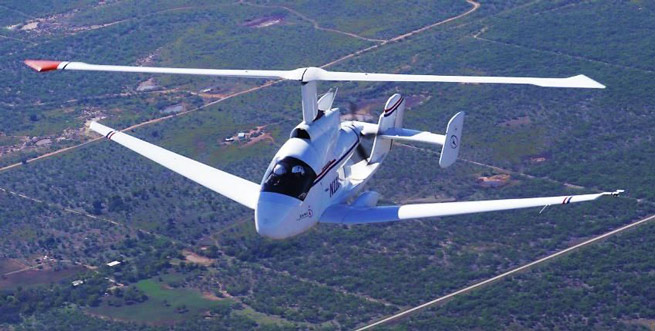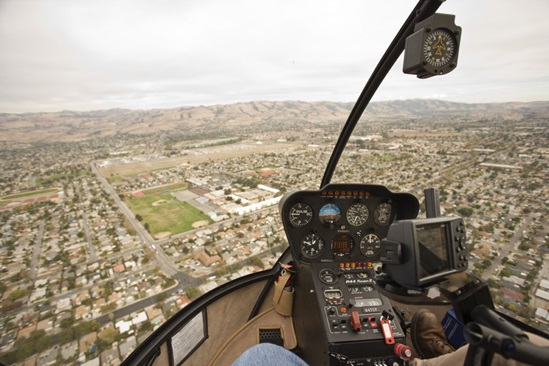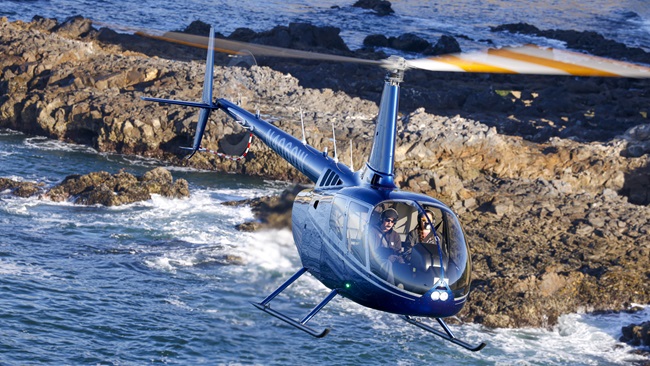Slowed rotor has high-speed implications
CarterCopter prototype breaks mu-1 barrier for second time

It takes off and lands like a helicopter, cruises like an airplane, and autorotates like an autogyro. Carter Aviation Technologies’ Slowed Rotor/Compound (SR/C) prototype broke the μ-1 barrier—a ratio of the forward speed of an aircraft to the speed of its rotor tip that generally limits the speed of rotorcraft—Nov. 7, the second time the company has achieved the feat.
The aircraft, which Carter Aviation President and CEO Jay Carter said can be flown with a fixed-wing pilot certificate, reached a true airspeed of 200 mph at 10,790 feet msl on the milestone flight. It flew for 49 seconds at μ-1 and above and seven minutes, 32 seconds above μ-0.96, the company said.
Spinning rotor blades present an aerodynamic challenge to aircraft designers aiming for high-speed flight: As the aircraft moves forward, the advancing blade travels through the air much faster than the retreating blade, creating a potentially dangerous imbalance of lift. If the advancing rotor tip has a speed of 200 mph and the aircraft is moving forward at 200 mph—a μ of 1—that tip is hurtling forward at 400 mph while the retreating tip has an airspeed of zero. An aircraft will typically roll.
High-speed helicopters such the Sikorsky X2 and the Eurocopter X3 tackle the problem with what Carter called “brute force”: For as fast as the aircraft travels, the rotor blades travel faster. (AOPA Pilot Senior Editor Alton K. Marsh discusses Sikorsky’s approach to the challenge, which includes counter-rotating blades, in the October 2011 article “Swamp Pirates.”) Carter Aviation Technologies takes the opposite approach: Slow the rotor so much that it becomes a nonissue in cruise flight.
“The rotor’s just along for the ride,” Carter said.
In high-speed cruise, Carter said the SR/C travels as fast and efficiently as general aviation fixed-wing airplanes. The slow-moving rotor basically disappears from a drag standpoint—“it’s like one thirtieth of the drag”—and the pusher-prop aircraft relies on lift from the long, thin wings. Because the aircraft takes off and lands using the rotors, the wings can be optimized for cruise flight, he said. With a more powerful engine, he said that the technology could reach 500 mph.
“I know I’m biased, but this aircraft can change aviation,” Carter said. “… I see this as general aviation, commercial aviation—we can build these aircraft up to a 767 size that can carry 250 passengers.”
The research and development firm, which licenses technology to other aerospace companies, first broke the μ-1 barrier with a first-generation design in June 2005. The aircraft was damaged in an emergency landing later that day, and the company decided not to repair it. The second-generation prototype is more than twice as efficient as the original, making it almost four times as efficient as the best helicopter, Carter said.
He touted the aircraft’s ability to take off and land vertically, autorotate at any altitude, and cruise at high speeds.
“We can combine the best of the fixed wing and the best of a helicopter and the best of a gyro all in one aircraft,” he said.



